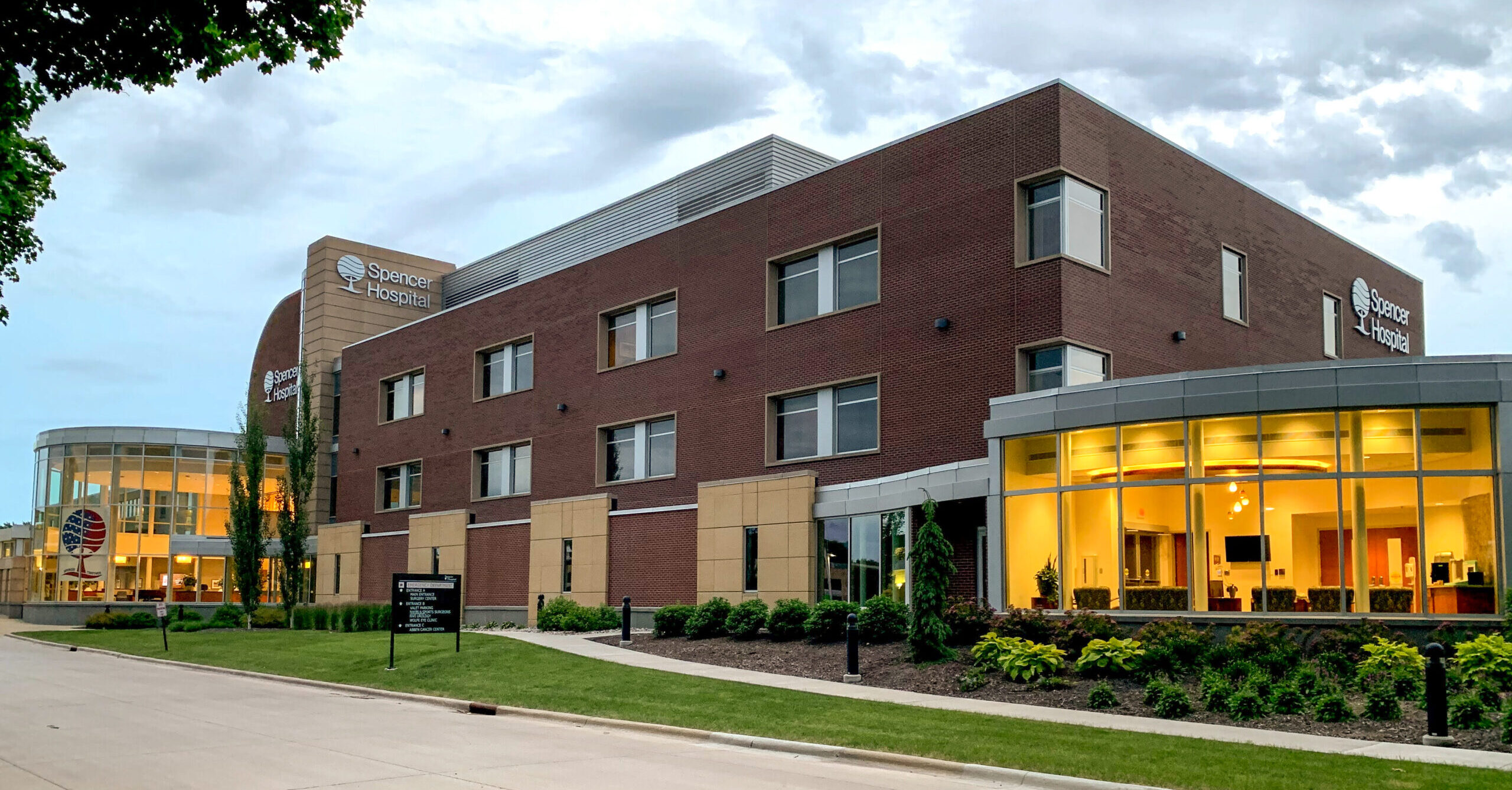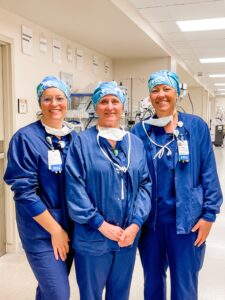Spencer Hospital’s compliment culture boosts team connections and improves morale

Spencer Hospital believes that everyone is healthier together.
A Top 100 Rural & Community Hospital offering comprehensive and quality healthcare services to the people of northwest Iowa and southern Minnesota, Spencer Hospital believes that connection is the heartbeat of their positive workforce culture.
Establishing a positive organizational culture where employees and managers support one another is a top priority for Spencer Hospital. They embrace Human Understanding by creating a culture of gratitude that expresses praise to keep up morale. Positive feedback has been shown to mitigate the negative effects of stress on employee performance and increase staff retention.
“It really starts with our employees and coworkers, and we want to have a positive culture for them,” says Becky Stoltz, Director of Quality Services. “I think sharing patient compliments and praising them for the good work they do caring for our patients is just one way we can support them.”
Spencer Hospital uses NRC Health’s Compliment Sharing, a scalable tool that makes it easy to show patient appreciation by automatically identifying positive feedback and empowering organizations to build positive workforce engagement.
“Not only do we want to be a healthcare facility of choice for our patients, we also want to be an employer of choice for co-workers,” says Susan Zulk, VP of Marketing and Fund Development. “Our team provides exceptional services, and we definitely want them to know all these great things that people have to say about the work they’re doing and the care they’re giving.”
Building Camaraderie and Resilience
Compliment Sharing makes it easy to recognize care teams and ensure that frontline staff are being thanked in a meaningful, specific, and timely way. Amanda Schany, Director of Diagnostic Imaging, has seen remarkable results with its mood-lifting effect contributing to the overall well-being of her department.
“I strategically send out those comments on Mondays. It’s a good start for the week for my staff to see those compliments and motivates them in a positive way.” Schany says. “We have numerous surveys that come through for diagnostic imaging patients, so it’s important to share what great things patients are saying. I send out all of our patient comments to my entire team so they all can see what positive impact their teammates are having on the patients they serve.”
Schany says that one of her strategies in sharing compliments is to bring up a few comments during department meetings, especially for patients who describe their encounters. She uses the comments as a learning opportunity by asking the tech that performed an exam to talk through how they made that patient experience as good as it was.
Five Strategies to Leverage Positive Momentum
The Spencer Hospital leadership team also acknowledges that reward programs reinforcing Compliment Sharing help make their culture strong. Here are five ways they’ve been able to leverage positive feedback:
1) Reinforce Efforts: HR hosts activities to encourage staff to be positive and rewards individuals or teams for their contributions. Marketing publishes positive comments in their biweekly newsletter. Based on the newsletter, one colleague or team is picked to be recognized with a treat, whether that’s a free meal in the cafeteria or a box of donuts for a team.
“It’s just really nice for everybody to see the variety and number of positive comments being made, as it reaffirms the good work everyone’s doing,” Zulk says.
Kara Schmillen, Patient Advocate, says it’s been a godsend for their staff to hear positive comments right away, because then they also remember, “Oh, I just saw that patient the other day, and they thought I did such a great job”—and they want to continue that feeling.
2) Build Culture by Sharing Responsibilities: Stoltz says that one strategy they’ve used in their emergency department to build momentum and share the workload is getting a team together to rotate the responsibilities monthly to share comments and congratulate team members on a job well done. Since people like the director, supervisor, and staff members give those kudos, it has helped with the buy-in of the program.
“It’s been helpful to involve coworkers in different areas,” Stoltz explains. “Leadership supports and values the work of team members. This approach has been really helpful, and staff feel engaged and empowered to help make choices and do things for our patients and each other.”
3) Improve Service Recovery: “We also get some patients who maybe have had a negative experience, and I think that helps us grow and learn in ways where we can improve immediately and not look back two months later and say, ‘Oh gosh, I don’t remember that situation,’” Schmillen says. “Now that it’s immediate, I remember it,— know what I need to do to make it positive for the next patient who comes through. So it’s been wonderful, I think, for our patients and our staff.”
Zulk reinforces that patient feedback has been helpful for service recovery, too, because if a patient has a concern, providers can call them the next day and address it right away, rather than leave patients wondering if anyone reads the surveys. In the end, patients have thanked them for calling to acknowledge any issues.
4) Emphasize Education: Zulk says their Connected Program encourages continuing education for all team members to connect. Since all service lines are connected, there is a common goal of caring for patients and their families, along with partnerships in the community. The focus of Connected is to provide tools and resources for hospital co-workers to have crucial conversations and deal with difficult situations, so they can continue to offer the best patient experience possible.
5) Reward a Job Well Done: Spencer Hospital created the GEM Awards: a recognition program, much like the Daisy Foundation’s national nursing award, that is implemented twice yearly to reward employees for exceptional care.
Collectively, the Spencer Hospital leadership team believes that the immediacy of patient comments helps drive their overall quality of care. And word of mouth is out: the culture is so positive, traveling nurses make it a point to share their experiences, so others clamor to work for Spencer Hospital.
Learn more about Compliment Sharing.
Six Benefits of Compliments
1. Compliments build confidence, validating a job well done and helping people see their own value.
2. Compliments spark creativity, encouraging staff to share more ideas and resolving key issues that can help make work environments become stronger, operate better, and save money.
3. Compliments build trust and momentum, empowering staff to share ideas that will empower others to share theirs too.
4. People who share compliments enjoy a positive impact, which helps people feel better and experience growth by sharing a positive growth mindset.
5. Compliments create a ripple effect. Kindness and encouragement spread to patients and staff and often spark a “pay it forward” effect, as people pay attention to positive attributes in others. It promotes selflessness, spreading far beyond the person complimented.
6. Compliments increase intelligence, reinforcing learning and positive behavior and triggering an “I want to do this again, so I feel this again” response. Neuroscientists have even shown that the brain processes verbal affirmations similarly to financial rewards. Studies show that compliments also impact memory, motivation, and other cognitive functions.

